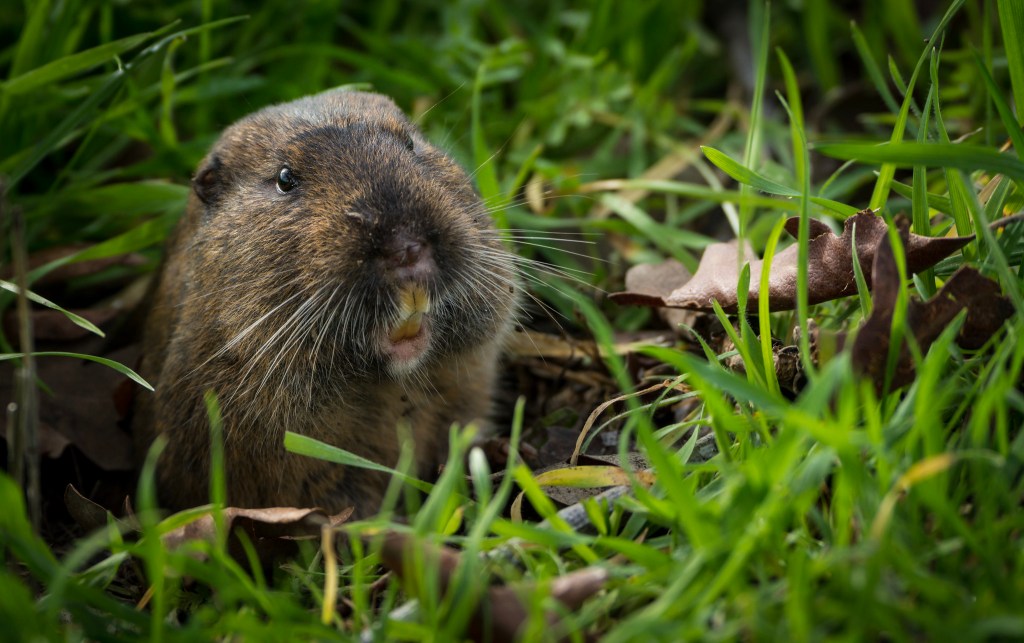How Big is a Gopher? Size, Facts, and More
Share
When it comes to the diverse world of wildlife, many people have questions about the creatures that share their environment. One of those creatures is the gopher, a small burrowing rodent that often sparks curiosity. This article will delve deep into the topic of how big is a gopher, providing you with fascinating insights and essential facts about these little critters.
Since many wonder about gopher size and attributes, our primary keyword will guide us today. Gophers are typically small creatures, primarily recognized for their distinctive features and burrowing habits. They boast a range of sizes, and throughout this article, we will uncover the various types of gophers, their specific measurements, and factors that may influence their size.

Understanding Gophers: Types and Traits
Before we get into specifics about size, it is crucial to understand gophers as a whole. The term 'gopher' commonly refers to several species of rodents, notably from the family Geomyidae. These nocturnal creatures are well-known for their long nails and powerful forelimbs, which they use to dig extensive tunnel systems underground. The most common types include the Pocket Gopher and the Plains Gopher, among others.
Gophers typically weigh between 1-4 pounds and range in length from about 5 to 14 inches, not including the tail. How to Remove Gophers can vary broadly among species. For example, the Southern pocket gopher may carry different measurements compared to the northern species due to dietary and environmental differences.
Adult Gopher Size Comparison
When considering how big adult gophers can get, various factors come into play. These factors include genetics, food availability, habitat, and overall health. Generally, adult gophers reach about 6 to 8 inches in length. However, certain species may grow larger, with some individuals reaching up to 14 inches in total length. Additionally, weight can vary; a robust gopher can tip the scales around 5 pounds. Their size can change with seasons, particularly during breeding periods when they need extra energy.

Juvenile Gopher Growth Patterns
Juvenile gophers start growing immediately after birth, often weighing around 1 ounce and measuring 3 inches long. These young gophers develop rapidly in the first few months. By the time they reach 8 weeks, they can weigh anywhere from 1 to 2 pounds, showcasing how quickly they adapt to their environment.
As gophers continue to grow, they undergo a series of phases that drastically influence their size and physical development. The juvenile period will end around six months when they achieve their adult sizes and weights. Understanding this growth phase is crucial for knowing how big a gopher will become.
How Habitat Influences Size
The environment where gophers live directly influences their growth and size. Gophers thrive in various habitats, from grasslands to agricultural fields. Factors such as **soil quality**, moisture levels, and **food availability** play significant roles in determining how big these rodents can become.
For instance, gophers living in nutrient-rich environments may grow larger than those in less fertile soils. A well-fed gopher family will often see members grow bigger than their counterparts struggling to find adequate food. When considering the breadth of their habitats, it is interesting to note how adaptations occur based on their surroundings.

Interesting Facts About Gophers
Along with their size, gophers possess unique characteristics that make them fascinating animals. For instance:
- Gophers have cheek pouches that they use for carrying food.
- They are primarily herbivores, feeding on plants, roots, and tubers.
- Gopher tunnels can extend for hundreds of feet, showcasing their fortifying skills.
- They primarily communicate through vocalizations, such as high-pitched whistles.
These traits add to the alluregophers and contribute to their well-managed environments. Understanding how big is a gopher only scratches the surface of their complexity and habitat adaptation.

Gophers in Comparison to Other Rodents
Gophers may be small, but they are not the smallest rodents. Compared to animals like mice or certain types of voles, gophers are somewhat larger. Knowing their size helps in understanding the dynamics of rodent populations in general. Gophers differ mainly in their digging capabilities and feeding habits. Because gophers are exceptional burrowers, they create large, complex systems that other rodents cannot replicate, further affectionately known for the mounds they leave behind. Their size plays a significant role in how they interact with other wildlife.
How to Manage Gopher Populations
For gardeners or farmers, understanding the size and habits of gophers can be crucial in controlling their populations effectively. Gophers can wreak havoc in yards and gardens. Simple methods of population control include:
- Using natural repellents
- Certain noises can deter them
- Setting traps strategically
- Practicing good farming techniques to limit burrowing harm
Learning about the management of gopher populations is essential for those looking to protect their land from these burrowing rodents. You can find more info on Repelling Gophers through ecological methods.
FAQs about Gopher Size
1. What is the average size of a gopher?
The average size of a gopher ranges from 5 to 14 inches long, not including the tail, and they typically weigh around 1 to 4 pounds.
2. Do all gophers weigh the same?
No, weights can vary widely depending on the species of gopher, their diet, and their habitat.
3. How fast do gophers grow?
Gophers grow quickly during their young years, reaching near-adult size within six months after birth.
As an Amazon Associate, I earn from qualifying purchases.
